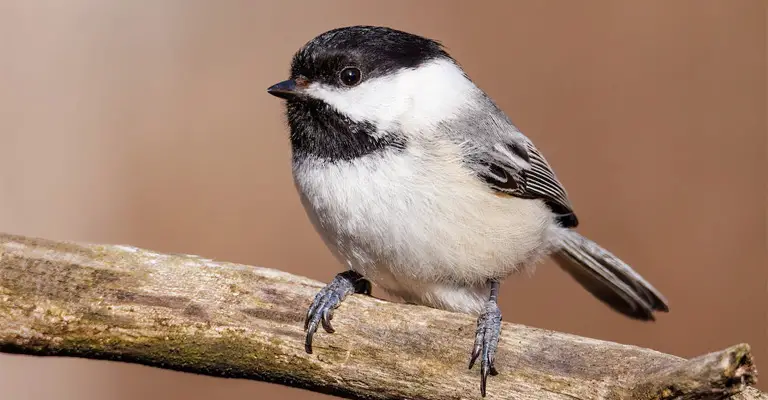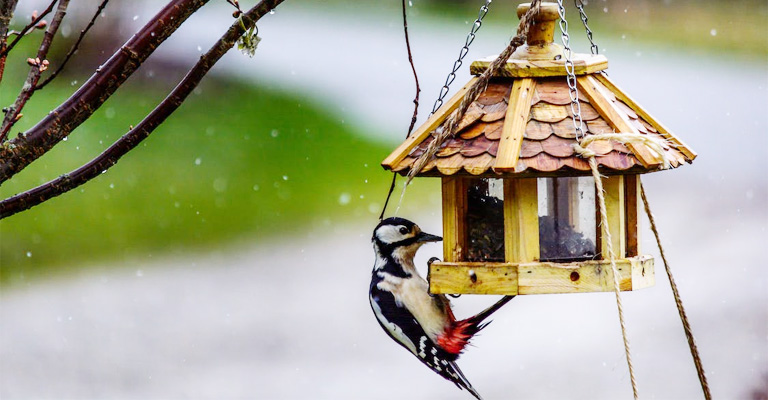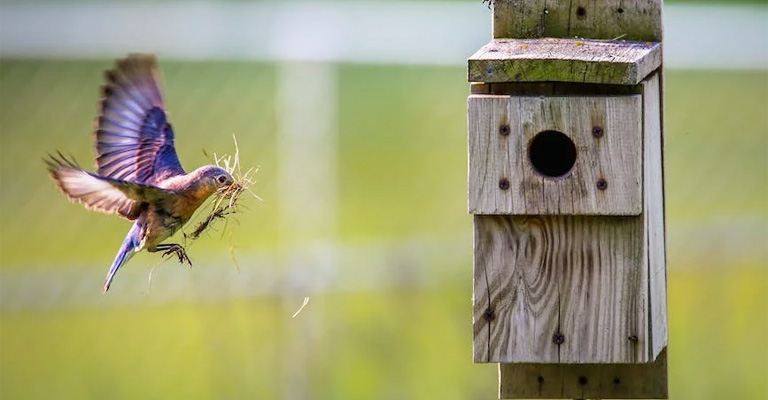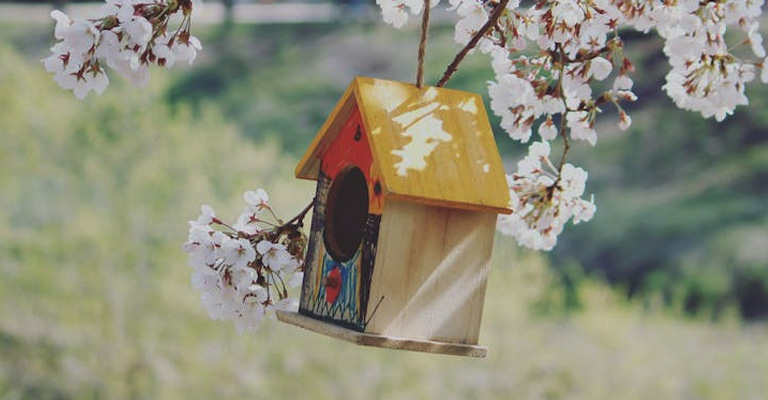Bringing the beauty and melody of birdsong into your surroundings is a rewarding endeavor that begins with a well-placed birdhouse.
The allure of witnessing these graceful creatures build nests, raise young, and engage in their daily activities is an invitation to create a harmonious connection with nature.
Attracting birds to your new birdhouse involves a strategic blend of considerations, from the ideal location and design to the provisioning of a welcoming environment.
This exploration delves into how can I attract birds to my new birdhouse, offering insights into the practices and techniques that will transform your birdhouse into a bustling haven of avian activity.

How Can I Attract Birds To My New Birdhouse?
There are some tips and tricks you can follow to make your birdhouse more appealing and inviting for birds.
Here are some of them, along with a paragraph description for each point:
Ideal Placement
Choose a sheltered location away from direct sunlight and strong winds. Mount the birdhouse on a pole or tree at a height suitable for the target species. A safe, quiet area reduces disturbance and encourages nesting.
Proper Orientation
Position the entrance away from prevailing winds and rain. Facing the entrance in a slightly different direction from the prevailing weather can shield the nesting site from harsh elements.
Native Vegetation
Surround the birdhouse with native plants that provide both cover and food sources. This creates a natural environment that attracts insects and insects attract birds, establishing a self-sustaining ecosystem.
Adequate Food Sources

Set up bird feeders nearby with a variety of bird-friendly foods. Different species have diverse diets, so offering a mix of seeds, suet, and nectar will cater to various birds’ preferences.
Clean Water Source
Install a birdbath or shallow container with fresh water. Birds require water for drinking and bathing, and a clean water source can greatly enhance the appeal of your bird-friendly habitat.
Suitable Nesting Material
Place materials like twigs, leaves, and straw near the birdhouse. Birds might use them to build their nests, saving them time and energy while making your yard even more attractive for nesting.
Predator Protection
Prevent access to the birdhouse from predators like squirrels or cats. Install predator guards or baffles to deter unwanted visitors from reaching the nests.
Seasonal Maintenance
Regularly clean out the birdhouse after the nesting season ends to prepare for future occupants. Remove old nesting materials and sanitize the interior to prevent disease transmission.
Be Patient
Birds might not move in immediately; it can take time for them to discover and feel comfortable with the new structure.
Keep providing food, water, and a safe environment, and be prepared to enjoy their presence when they decide to call your birdhouse home.
Which Bird Will Attract Birds To My New Birdhouse?

Birdhouses are a great way to provide shelter and nesting sites for cavity-nesting birds, which are birds that use holes or cavities in trees or other structures to build their nests.
However, not all birds will use birdhouses, and different birds have different preferences for the type, size, and location of their birdhouses.
Here are some of the most common birds that nest in birdhouses:
Bluebirds
Bluebirds are beautiful songbirds that come in three species: eastern, western, and mountain. They have bright blue and orange plumage and feed on insects and berries.
Bluebirds like to nest in open fields or meadows, where they can find plenty of food and avoid predators.
They prefer birdhouses that have a 1.5-inch diameter entrance hole and are mounted on a pole or a fence post at least five feet above the ground. You can also attract bluebirds by offering them mealworms or suet in a nearby feeder.
Purple Martins
Purple martins are the largest members of the swallow family and have glossy purple-black feathers. They are social birds that like to live in colonies of many birds of their species.
They feed on flying insects and catch them in midair. Purple martins like to nest in open areas near water, where they can find abundant insects and avoid predators.
They prefer apartment-style birdhouses or multiple nesting gourds that are placed on a tall pole in the middle of a lawn or open field.
You can also attract purple martins by playing their calls from a speaker near the birdhouse.
House Wrens
House wrens are small brown birds with long tails and bubbly songs. They are very adaptable and can live in a variety of habitats, from forests to suburbs. They feed on insects and spiders and often hunt in dense vegetation.
House wrens like to nest in thickets or shrubs, where they can find cover and food. They prefer birdhouses that have a 1.125-inch diameter entrance hole and are hung from a small tree or a shrub at least five feet above the ground.
You can also attract house wrens by offering them twigs, grasses, or feathers as nesting material.
Chickadees
Chickadees are cute and friendly birds that have black and white heads and gray bodies. They belong to the tit family and come in several species, such as black-capped, Carolina, chestnut-backed, and tufted.
They feed on seeds, nuts, berries, and insects and often visit bird feeders. Chickadees like to nest in woodlands or gardens, where they can find food and shelter.
They prefer birdhouses that have a 1.125-inch diameter entrance hole and are mounted on a tree trunk or a branch at least five feet above the ground. You can also attract chickadees by offering them sunflower seeds or peanuts in a nearby feeder.
Tree Swallows
Tree swallows are graceful birds that have iridescent blue-green backs and white bellies. They are related to purple martins and share some of their habits. They feed on flying insects and catch them in midair.
Tree swallows like to nest near water, where they can find aquatic insects and avoid predators.
They prefer birdhouses that have a 1.5-inch diameter entrance hole and are mounted on a pole or a fence post at least five feet above the ground. You can also attract tree swallows by offering them feathers as nesting material.
Where To Hang A Birdhouse?

Here are some tips on where to Hang a Birdhouse-
Sheltered Area
Hang your birdhouse in a sheltered location that shields it from extreme weather conditions. Look for spots that are partially shaded to protect the nesting birds from direct sunlight and heavy rain.
Safe Distance
Position the birdhouse at a safe distance from potential predators, such as cats, squirrels, and other climbing animals.
Placing it away from overhanging branches or structures that predators could use as launch points helps keep the nesting birds safe.
Height Consideration
Choose an appropriate height based on the bird species you wish to attract. Generally, a height of 5 to 15 feet above the ground is suitable, but some species prefer higher placements, while others may nest closer to the ground.
Avoid Human Traffic:
Select a location away from frequent human activity or high-traffic areas. Birds prefer quiet and undisturbed spaces for nesting.
This reduces stress and increases the likelihood of successful nesting.
Nesting Preferences
Different bird species have varying preferences for their nesting sites. Research the species you’re targeting to understand their specific habitat requirements and choose a location that matches those needs.
Natural Cover
Position the birdhouse near natural vegetation or trees. This provides cover and perching spots for birds, making them feel more secure and encouraging them to investigate the new nesting site.
Adequate Visibility
While some level of cover is beneficial, ensure that the entrance of the birdhouse has good visibility.
This allows birds to monitor their surroundings for potential threats and provides an unobstructed path for them to enter and exit.
Avoiding Extreme Heat
In warmer climates, avoid hanging birdhouses in areas that receive prolonged exposure to the sun. Overheating can be detrimental to nesting success. Choosing a spot with partial shade can help regulate temperature.
Proper Angles
Ensure the entrance hole of the birdhouse faces away from prevailing winds. This shields the interior from rain and wind-driven debris, providing a more comfortable nesting environment for the birds.
Access for Monitoring
Consider your ability to monitor the birdhouse without causing too much disturbance. Placing it at a suitable height and location allows you to observe nesting activity without intruding on the birds’ privacy.
Choosing the right location for your birdhouse involves a balance between the needs of the birds and your ability to provide a safe, attractive nesting site.
By taking these factors into account, you increase the chances of your birdhouse becoming a sought-after residence for your feathered friends.
FAQ
Choose an appropriate location that offers protection from predators and weather. Provide food and water sources nearby. Select a birdhouse design suited for the target species and ensure proper ventilation and drainage for the nest box.
Place it in a quiet, shaded area, facing away from prevailing winds. A height of 5 to 15 feet off the ground is generally suitable, depending on the species.
Avoid locations with heavy human traffic or high predator presence.
Different bird species have specific preferences. Research the birds in your area and choose a design that suits their needs. Dimensions, entrance size, and materials all matter in attracting the right occupants.
Plant native vegetation and provide feeders with appropriate bird food. Include diverse plants that offer cover, nesting material, and insects for a complete ecosystem. Ensure a clean water source like a birdbath to attract more feathered friends.
Early spring is ideal before the breeding season starts. This gives birds time to explore and establish their territory.
If you’re late, though, you can still put it up; birds might use it as shelter outside of the breeding season.
Conclusion
In the enchanting world of birdwatching, the act of drawing birds to your newly erected birdhouse involves more than mere placement; it’s an invitation to partake in the symphony of nature.
By selecting the optimal location, crafting a suitable design, providing essential resources, and offering a safe haven, you extend an irresistible call to the avian residents of your region.
As the melodies of warblers, chirps of sparrows, and the flutter of wings grace your outdoor space, your efforts to attract birds to your birdhouse will reward you with a front-row seat to the captivating theater of the natural world.
This harmonious partnership between humans and avians fosters a deeper appreciation for the delicate ecosystems we share, reaffirming the interconnectedness that binds us all.